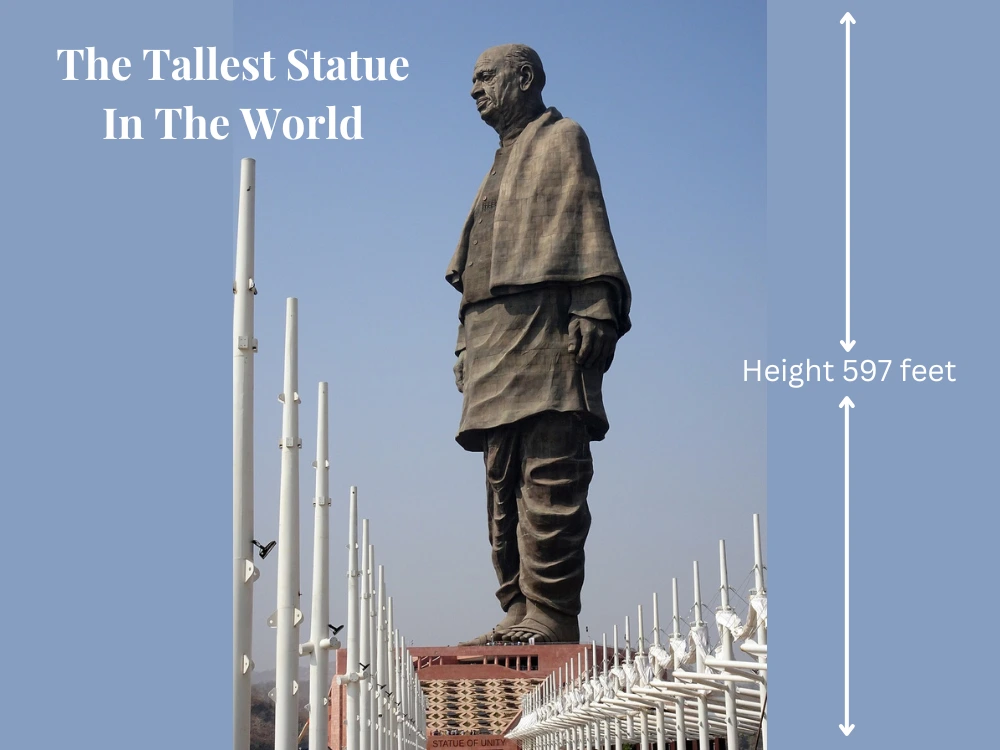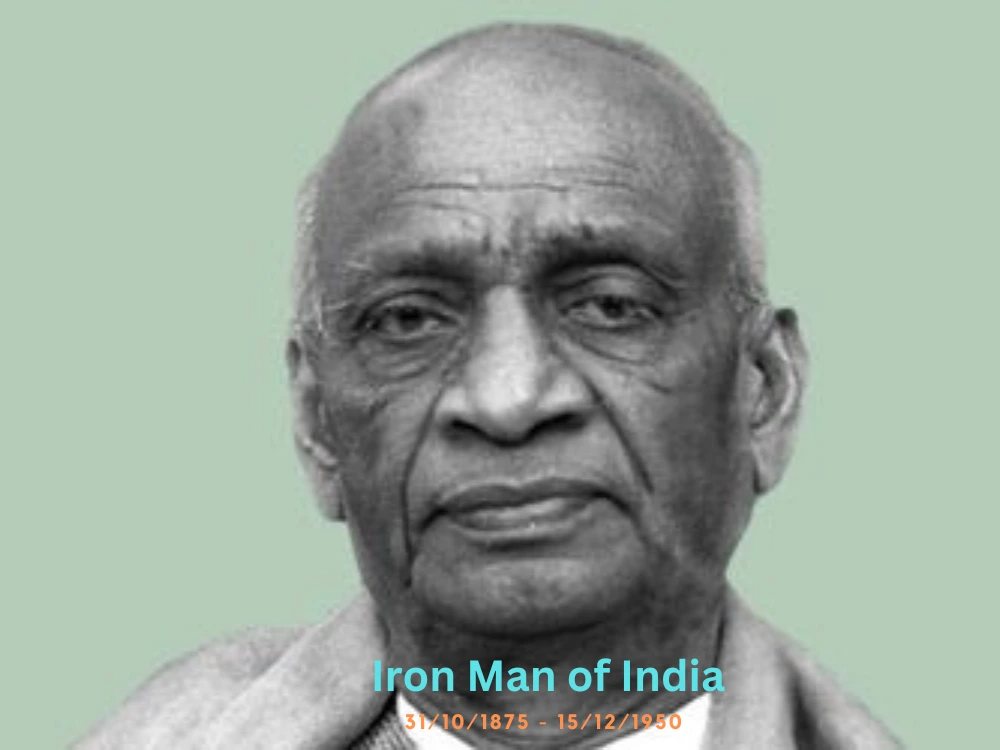Sardar Vallabhbhai Patel is also known as the “Iron Man of India.“. He not only led India towards complete independence after gaining independence but also remembered to have led India as her first ever Deputy Prime Minister and first ever Home Minister of this newly independent State of India.
Personal Information
| Full Name | Vallabhbhai Jhaverbhai Patel |
| Born | 31 October 1875 |
| Died | 15 December 1950 |
| Political party | Indian National Congress |
| Profession | Barrister, Activist, Freedom fighter |
| Awards | Bharat Ratna |
| Country | India |
Early Life and Family Background
He was born on 31 October 1875 in Nadiad, Gujarat. Patel belonged to a middle-class family. His father, Jhaverbhai Patel, was a farmer, and his mother was a homemaker known as Ladba Patel. Vallabhbhai Patel was brought up to learn the morals of hard work and never to give up, which the countryside environment engraved in his psyche.
Education and Early Career
Patel, an ambitious young man in 1910, went off to England to read from the Middle Temple as a lawyer and emerged as one of the successful lawyers for his people in Gujarat. Always sharp and very intelligent, he was on the right side of justice but did never lose his heart for Indians.
Inspiration from Mahatma Gandhi
He was inspired by Mahatma Gandhi’s doctrine of non-violence and civil disobedience, with which he met him at this time in 1917. He left all that was promising in terms of his legal career; joined the Indian National Movement; and dedicated himself solely to the cause of Indians to be independent.
Patel’s Role in the Indian Independence Movement
Patel quickly became popular within the Indian National Congress and soon became one of Gandhi’s most trusted allies. He initiated several key movements against British rule, who “made protests, led boycotts, and encouraged non-cooperation with the British government.“.
The Kheda Satyagraha
In 1918, Patel initiated the Kheda Satyagraha, a movement in Gujarat in which the farmers protested the high taxes of the British in the face of great famine. Due to his leadership and negotiation skills, the farmers were given tax relief, and this stint established him as someone not to be messed with.
The Bardoli Satyagraha
Patels gained national recognition in 1928 during the Bardoli Satyagraha. He led the farmers of Bardoli in Gujarat in resistance to unfair increases in taxation. Success in this campaign earned him the title of Sardar, meaning leader, given to him by the people of Bardoli.
Contribution to the Quit India Movement
He was also one of the important leaders of the Quit India Movement in 1942, a mass protest for the immediate end to British rule. He was imprisoned by the British for some years for participating in it, but his determination made the wish stronger in him: that he must help free India from the shackles of colonial rule.
Becoming India’s First Deputy Prime Minister
In 1947, when India won independence, the country’s first Deputy Prime Minister and Home Minister was Sardar Patel, and accordingly, his leadership had to carve out the newly independent nation, or political integration, and then internal security.
Role as India’s First Home Minister
Patel, as Home Minister, was that important face who ensured that India and partition were done peacefully through mass migration and communal violence; his leadership was firmer and fairer than anybody else during a period of great turmoil.
Also read Bal Gangadhar Tilak Biography
Integration of Princely States
Perhaps the most spectacular achievement of Sardar Patel was that of the peaceful integration of over 560 princely states into a united Indian Union. Patel, through diplomacy, persuasion, and even force sometimes, brought in many independent states that existed under British rule to form a unified India.
The Unification of India
Patel earned the sobriquet “Iron Man of India” for unifying India, finally blocking the splintering of individual states by building the gigantic infrastructural provision for a superstate. The most striking example of his visions is that of a united India.
Patel’s Role in Framing India’s Constitution
He played a great role in drafting the Constitution of India as well. Sardar Patel was an active participant with the Constituent Assembly so that the brand-new nation would have a strong democratic foundation to ensure that equality and justice could be rendered to all citizens.
Patel’s Legacy and the Statue of Unity

In Gujarat, the tallest statue in the world (height of 597 feet) was unfolded in 2018 as a memory of Sardar Vallabhbhai Patel, in his name, as an expression of efforts given to unite India and with considerable contributions for the nation. He is remembered with this statue.
Sardar Vallabhbhai Patel Unity Day
Sardar Vallabhbhai Patel Unity Day is on 31st October of every year. He was an irreplaceable figure as “Iron Man of India,” who helped merge more than 500 princely states when India became independent. Unity Runs and parades fill the day, with parades in his memory celebrating national unity. This great man’s legacy finds epitome in the statue—the tallest in the world—called the Statue of Unity in Gujarat.
Inspirational quotes by Sardar Vallabhai Patel
“Two ways of building character – cultivating strength to challenge oppression, and tolerate the resultant hardships that give rise to courage and awareness.”
“In a domestic Government unity and co-operation are essential requisites.”
“Satyagraha is not a creed for the weak or the cowardly.”
“Caste, community will rapidly disappear. We have to speedily forget all these things. Such boundaries hamper our growth.”
“Today we must remove distinctions of high and low, rich and poor, caste or creed.”
“We worked hard to achieve our freedom; we shall have to strive harder to justify it.”
Conclusion: The Legacy of the Iron Man of India
Sardar Vallabhbhai Patel, the statesman, was just a visionary leader who inspired millions with his leadership, policies, and vision of working towards the unity, peace, and progress of the nation. His contribution to India’s independence and unification is simply unprecedented.
FAQs
What is Sardar Patel famous for?
He remains well-acclaimed for integrating more than 500 princely states into one free India and was frequently called the “Iron Man of India” for his leadership in attaining national integration.
How was the Statue of Unity built?
This hybrid structure is made up of steel framing, reinforced concrete, and bronze cladding. It took five years to complete. This monument finds inspiration from Sardar Patel as the unifier of India.
Who gave the title ‘Sardar’ to Vallabhbhai Patel?
Sardar is the term that Mahatma Gandhi bestowed upon Vallabhbhai Patel to lead the freedom fight of India. Sardar, in its literal sense, means a “leader” or a “chief.“
What is the Statue of Unity called?
The Statue of Unity is popularly called the “World’s Tallest Statue,” an honor to the contributions by Sardar Patel in India.



